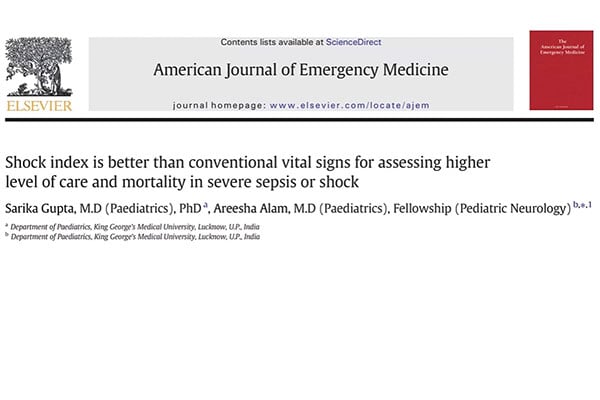International EMS Systems: Past and Future
Luke Wohlford, MS4 – University of Arizona College of Medicine – Phoenix
EMRA MSC Editor, 2021-2022
EMS Systems in the United States
Much like emergency medicine training, Emergency Medical Services (EMS) did not even begin to exist in a meaningfully standardized way until the 1970s. The landmark “White Paper” by the National Academy of Sciences and National Research Council in 1966 changed everything. Evidence in the report demonstrated that traumatic deaths were the most common cause of death in the 1-37 year-old age range, and that ambulance systems at the time did not rise to the occasion [1]. The researchers determined that ambulances in the country were generally underprepared, lacked communication capacity, and lacked standardized medical training for the attendants. Traumatic death was more associated with warfare in American minds at the time, but the report found that there were more civilian deaths in 1965 from accidents than there were deaths in the previous two decades from wars [1]. Other topics in the report included underprepared emergency departments with variable standards of emergency care across different hospitals. Recommendations made in the report laid the foundation for many advances that would occur in EMS systems in the next decade, and the effects of those changes are seen to this day. An excellent article linked here gives an additional overview of the history of EMS in the United States.
International EMS Systems
While the United States is a leader in prehospital care, many other countries have also built substantial EMS infrastructure, albeit with enormous variability between countries. There is a saying for EMS systems: “If you’ve seen one EMS system, you’ve seen one EMS system.” No two EMS systems are exactly alike, because of vast variations in care provider types (firefighter-based or ambulance-based), medical direction, catchment area geography, financial resources, and treatment protocols. Some overall themes allow better comparisons between EMS systems of different countries. The training level of first responders can generally be categorized into Advanced Life Support (ALS) and Basic Life Support (BLS) [2]. In the United States, ALS corresponds to the scope of practice of paramedics, and BLS corresponds to that of EMTs. This distinction is conserved between many countries, such as Canada, the United Kingdom, all Nordic countries, Japan, and Greece [3-7]. In other countries, certification systems and scopes of practice differ so it is difficult to precisely compare levels between two countries. Many countries with less funding for public safety rely solely on BLS services for their EMS systems such as much of South Africa, China, and many countries in South and Central America [8,9]. Another distinction of EMS systems internationally is whether a Franco-German model or an Anglo-American model is utilized [2]. Systems using the Franco-German model depend on ambulance attendants with more advanced training, often using physicians deployed to the field where more people are treated at the scene of dispatch, and only the sickest patients are brought to the hospital. The Anglo-American model is more focused on quickly bringing patients to the hospital, and fewer patients are treated at the scene of dispatch. This system likely sounds more familiar to us in the United States because it has applied to even the earliest American prehospital efforts in the late 19th century.
Earning the “Franco” half of the Franco-German model name, the beginnings of EMS in France were more focused on intensive treatment at the scenes of accidents. The first French Mobile Medical Intensive Care Unit was established in 1955 to respond to motor vehicle accidents, bringing physicians and nurses directly to the scenes of accidents [10]. This was further developed in the 1960s to the national system France uses today. Any of the four appropriate levels of care can be now dispatched in France, either BLS, ALS, single physician, or mobile MICU depending on the emergency call triage [10]. Throughout Europe, many other national EMS systems were established in the 1960s as well. This occurred in the United Kingdom after the Millar Report in 1966 set forth recommendations to improve their system, analogous to the United States’ White Paper [11]. Some European countries developed EMS systems later on, with the Portuguese system established in 1980 and the Greek system established in 1987 [7,11]. Throughout the world, countries varied more in their EMS development, such as the South African system established in 1977 but not held to a medical training and certification standard until 1994 [8]. Japan’s first ambulance predates that of many other countries with Tokyo City’s first six ambulances running in 1935. However, the impetus to create a national EMS system was not acted on until 1991 [6]. A common theme appears to emerge in the development of EMS systems, where a smattering of unorganized ambulance services are recognized to not provide adequate care to the communities, then a national overhaul effort is undertaken to establish standardization.
Modern United States EMS and the Future
Arguably, the structure and function of EMS systems in the United States have not drastically changed in the decades since 1990. This is not to say that there have not been significant changes in prehospital medicine protocols, interventions, and operations. Efforts to improve prehospital care by governmental agencies, physicians, prehospital medicine leaders, and public health officials have been ongoing since the inception of modern EMS systems. Multiple iterations of “EMS Agenda for the Future” have been published, each time outlining the many ways systems can be improved [13]. Innovation has always been at the forefront of prehospital medicine, and in the United States this is seen especially in the recent efforts to promote community paramedicine. Utilizing more of a Franco-German structure of EMS systems, community paramedicine utilizes paramedic, nursing, and sometimes physician personnel to respond to non-emergent or semi-emergent calls and provide medical care on the scene, diverting patients from emergency department visits they may not have needed.
Across the country, EMS systems have continued to adopt new innovations in resuscitation science and emergency medicine. Mobile ICUs, point-of-care stroke units with tPA, and mobile ECMO units were all once fantasies but now are being trialed by current pioneers. Ever imagined dropping off AEDs to cardiac arrest cases in the crucial minutes before ambulances arrive? It’s being tested in Canada. New and inventive ways to provide medical care in non-medical environments come from diverse settings such as battlefields and hospitals, and continue to be trialed in communities as natural experiments. It has proven to be an exciting field in the 55 years since the White Paper, and likely will look drastically different in the next 50 years.
References:
- National Academy of Sciences. Accidental death and disability: the neglected disease of modern society. Published 1966. Accessed October 12, 2021 from https://www.ems.gov/pdf/Accidental_Death_and_Disability_1997.pdf.
- Al-Shaqsi S. Models of International Emergency Medical Service (EMS) Systems. Oman Med J. 2010;25(4):320-323. doi:10.5001/omj.2010.92
- Symons P, Shuster M. International EMS Systems: Canada. Resuscitation. 2004;63(2):119-122. doi:10.1016/j.resuscitation.2004.06.010
- lack JJ, Davies GD. International EMS systems: United Kingdom. Resuscitation. 2005;64(1):21-29. doi:10.1016/j.resuscitation.2004.10.004
- Langhelle A, Lossius HM, Silfvast T, et al. International EMS Systems: the Nordic countries. Resuscitation. 2004;61(1):9-21. doi:10.1016/j.resuscitation.2003.12.008
- Lewin MR, Hori S, Aikawa N. Emergency medical services in Japan: an opportunity for the rational development of pre-hospital care and research. J Emerg Med. 2005;28(2):237-241. doi:10.1016/j.jemermed.2004.09.009
- Papaspyrou E, Setzis D, Grosomanidis V, Manikis D, Boutlis D, Ressos C. International EMS systems: Greece. Resuscitation. 2004;63(3):255-259. doi:10.1016/j.resuscitation.2004.06.009
- MacFarlane C, van Loggerenberg C, Kloeck W. International EMS systems in South Africa--past, present, and future. Resuscitation. 2005;64(2):145-148. doi:10.1016/j.resuscitation.2004.11.003
- Hung KK, Cheung CS, Rainer TH, Graham CA. EMS systems in China. Resuscitation. 2009;80(7):732-735. doi:10.1016/j.resuscitation.2009.04.016
- Adnet F, Lapostolle F. International EMS systems: France. Resuscitation. 2004;63(1):7-9. doi:10.1016/j.resuscitation.2004.04.001
- Mackenzie R. Brief history of Pre-Hospital Emergency Medicine. Emerg Med J. 2018;35(3):146-148. doi:10.1136/emermed-2017-207310
- Gomes E, Araújo R, Soares-Oliveira M, Pereira N. International EMS systems: Portugal. Resuscitation. 2004;62(3):257-260. doi:10.1016/j.resuscitation.2004.04.013
- NHTSA Office of EMS. 50 years of modern EMS. Published 2020. Accessed October 16, 2021 from https://www.ems.gov/OEMShistory.html
Related Content


Feb 25, 2021
Trailblazers in Emergency Medicine : CCM
The EMRA Critical Care and D&I Committees hosted a fireside chat discussing the integral role of women and URiM in EM-CC. This discussion will launch an initiative designed to increase representation and mentorship for URiM and women in emergency medicine critical care fields.





